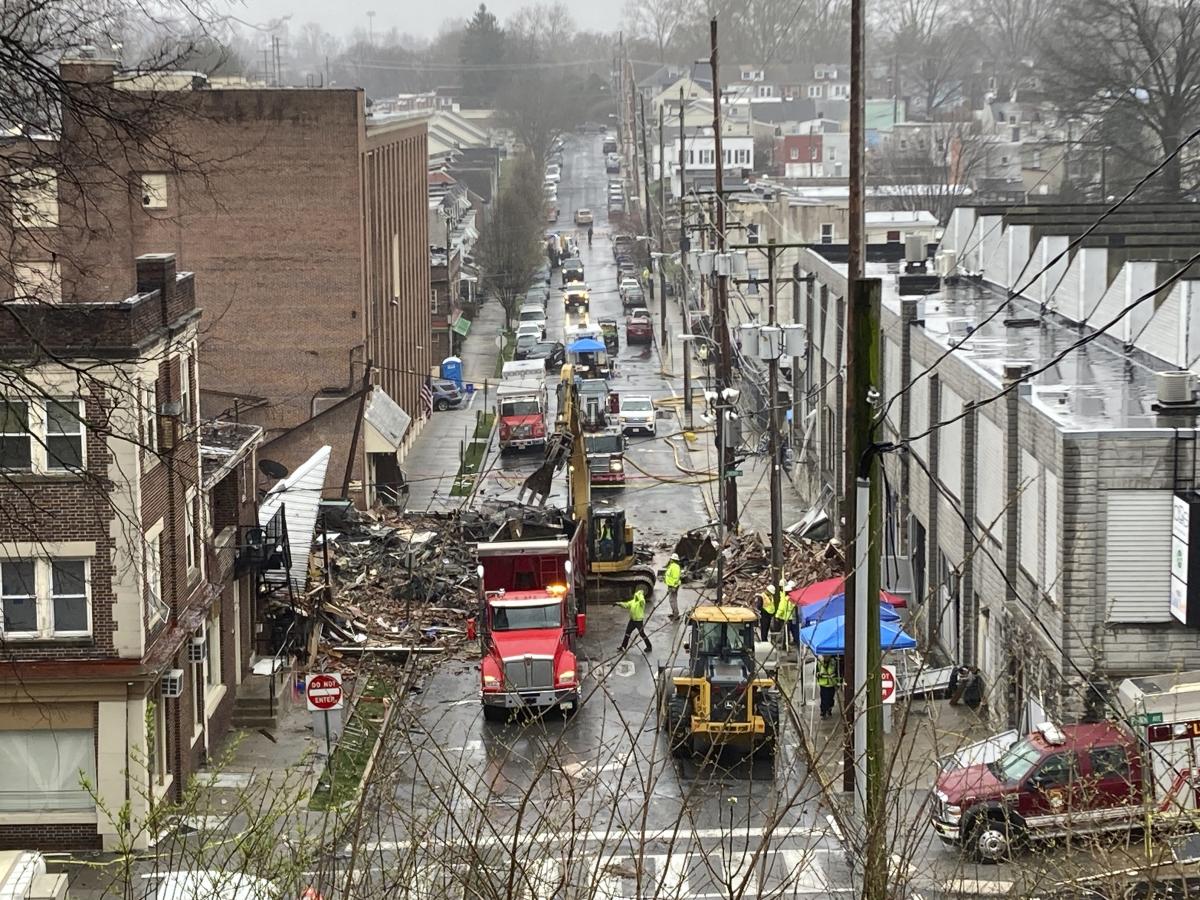
Last week's fatal blast at a Pennsylvania chocolate factory highlighted the combustibility of food plants in general and chocolate making in particular.
The powerful explosion Friday at R.M. Palmer Co. killed seven people, sent 10 to the hospital and damaged several other buildings in West Reading, a small town 60 miles (96 kilometers) northwest of Philadelphia, where the 75-year-old, family-owned company has long had a factory.
Local, state and federal investigations are ongoing. Pennsylvania State Police have said “everything’s on the table,” as fire marshals try to pinpoint the origin and cause. Some workers told relatives they smelled natural gas before the blast, although the gas utility UGI said it received no reports of a gas leak. On Tuesday, federal officials said they were investigating the role of a natural gas pipeline in the explosion.
A look at some of the hazards of food manufacturing and what may have been behind this fatal blast:
THE RISKS
In general, commercial ovens and furnaces, commercial refrigerant using ammonia and combustible dust produced by ingredients like cocoa powder and corn starch are primary explosive hazards at food plants, according to Holly Burgess, technical lead for industrial and chemical safety at the National Fire Protection Association, a nonprofit group that produces hundreds of codes and standards.
“Most people, if you’ve not been in any sort of food manufacturing, you don’t understand what your hazards are and what you’re looking at,” Burgess said.
Chocolate companies and other food manufacturers must take steps to mitigate the risk of fire and explosion from dust. Smaller particles that stay aloft pose a greater danger than bigger particles that quickly fall to the floor.
“It is a common concern at many food production facilities handling fine combustible particulates,” said Bob Zalosh, a retired professor at Worcester Polytechnic Institute and a consultant on industrial fire and explosion hazard mitigation and investigations.
Food manufacturers are supposed to determine the combustibility of the dust, perform a hazard analysis and then take steps to manage it, adhering to the fire protection association’s standard for preventing dust explosions in food processing plants.
Common methods for controlling dust include dust collectors and industrial vacuum cleaners.
THE PALMER BLAST
One possible culprit in the blast is highly flammable powdered starch, which candy companies often use to cast chocolate into shapes such as Easter eggs, said Terry Wakefield, a business consultant and food scientist who used to run a manufacturing facility that supplied chocolate to R.M. Palmer.
The shock wave from an initial explosion — potentially of natural gas — could have jarred any dust accumulated on ceilings and other surfaces, he said. "And now you end up with a massive amount of starch, which combusts, and those explosion clouds move faster than sound and they have unbelievable force,” said Wakefield, who made his assessment after watching video of the explosion that was captured by a TV station's weather camera.
“A lot of people don’t realize that starch could do that sort of thing," he said.
Based on the kinds of candy Palmer makes, the company likely used the starch-casting method, according to Wakefield.
Officials at the family-owned company have not responded to questions from The Associated Press.
Dust explosions have long been a problem in manufacturing. Between 1980 and 2017, nearly 400 combustible dust fires and explosions killed 185 people and injured more than 1,000 across multiple industries, including food, chemical, paper, pharmaceutical and metal processing, according to the U.S. Chemical Safety Board.
In 2008, an accumulation of sugar dust ignited and blew up the Imperial Sugar plant in Port Wentworth, Georgia, killing 14.
WORKPLACE SAFETY RECORD
At least two workplace accidents have happened at Palmer since 2018, according to federal records.
The U.S. Occupational Safety and Health Administration, which regulates workplace safety, visited Palmer's West Reading plant in 2018, when an employee lost the tip of a finger while cleaning a pressurized valve. The company agreed to pay a $13,000 fine.
In 2019, OSHA investigated an accident at Palmer's plant in nearby Wyomissing, Pennsylvania, when a conveyor belt was turned on while a worker was cleaning a roller, according to federal records. The employee's arm was broken in multiple places. The company settled with OSHA for $26,000.
And in January, records show, OSHA levied a penalty of more than $12,000 after an inspection at the Wyomissing plant. Details of that case were not available.
The online records did not say anything about combustible dust, or any other explosive hazard at Palmer.
LITIGATION FILED
A woman who lived next door to the plant filed suit Tuesday, alleging Palmer was negligent in failing to maintain its equipment and prevent the blast. Betty Wright was “lifted from her feet and blown across the room,” suffering injuries to her neck, back, hip and leg, the suit said. She also lost belongings.
A statement from Wright's lawyers at Morgan & Morgan said the firm has put together a “team of experts so we can understand what caused this catastrophic explosion."
Additional lawsuits are expected.
"Factory" - Google News
March 29, 2023 at 03:42AM
https://ift.tt/mh6YkzZ
Deadly chocolate factory blast highlights combustion risks - Yahoo News
"Factory" - Google News
https://ift.tt/rvcx82o
Shoes Man Tutorial
Pos News Update
Meme Update
Korean Entertainment News
Japan News Update
Bagikan Berita Ini















0 Response to "Deadly chocolate factory blast highlights combustion risks - Yahoo News"
Post a Comment